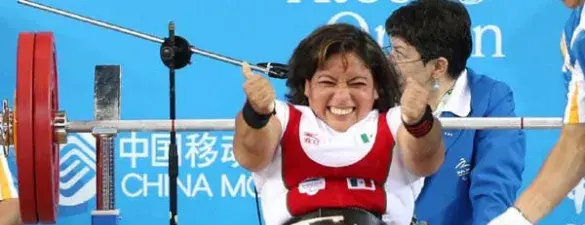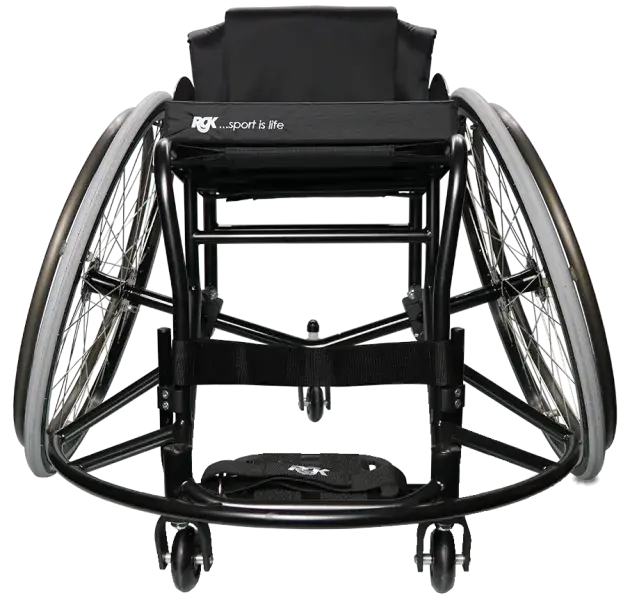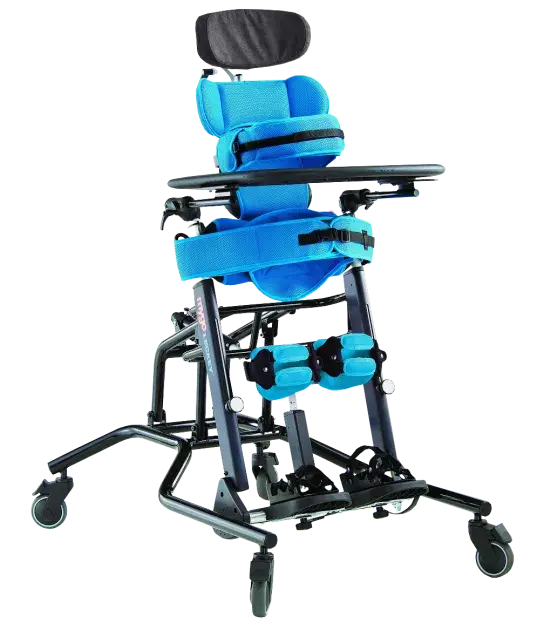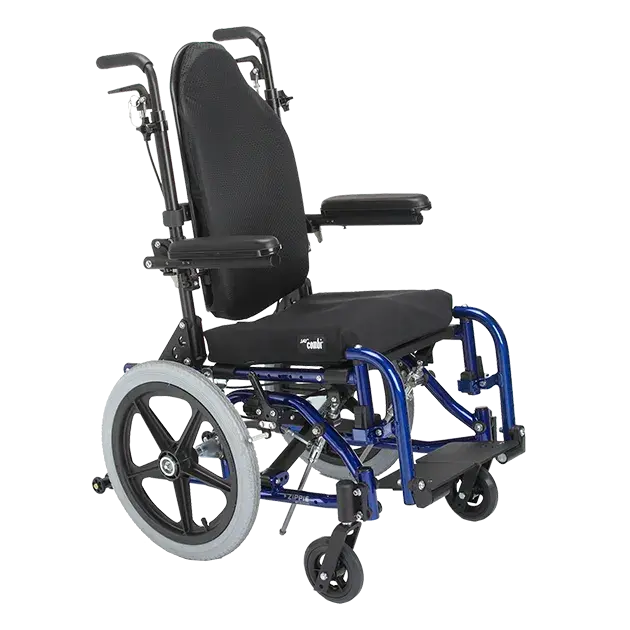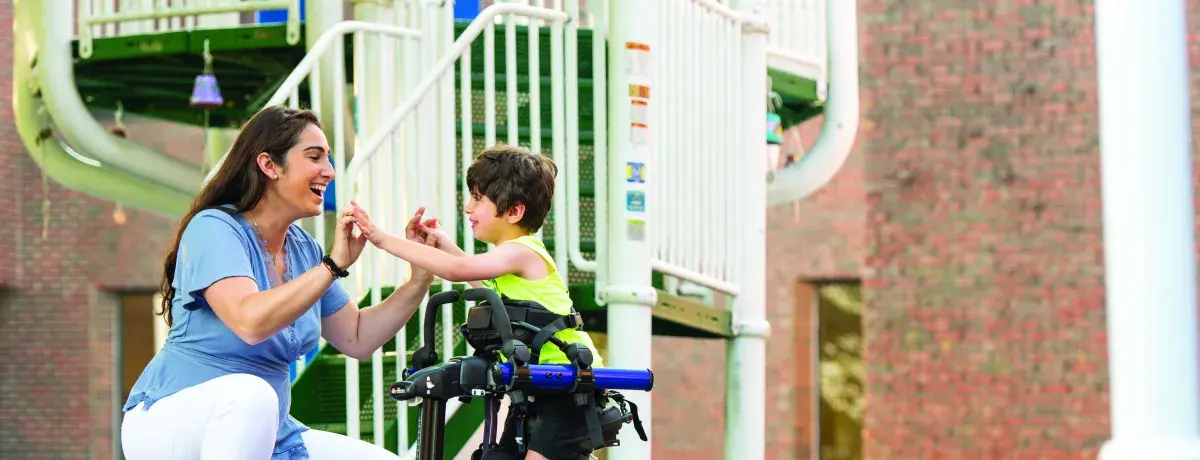
Revealing the world of gait trainers: encouraging independence
Walking is a notable part of human life. The acquisition of this ability, which occurs during childhood, is a transcendent fact in psychomotor development, since it allows independent movement in space. . in which it develops. In addition, it contributes to discovering what surrounds one, increasing the acquisition of sensory stimuli, improving the perception of space and helping to improve motor skills.
Walking is not simply a physical activity, it is considered a profound milestone in human development because it opens the doors to exploration and independence. Acquiring this skill is often taken for granted, but the reality is that for many children there are multiple reasons that lead them to experience delays or difficulties in the acquisition of walking.
On this occasion, we will delve into the importance of walking for the development of children, exploring the stages of motor learning and the key role that a walking trainer can play for children who require therapeutic intervention when they are . seeking independent mobility.
Acquire the skill of walking
The process of learning to walk is a fascinating journey through the milestones of a child's development. It involves a sequence of stages, each of which contributes to the acquisition of independent mobility. Children go through the following stages until they acquire walking:
Face-down locomotion (crawling):
Normally, it starts around 6 to 9 months. Before learning to walk, babies usually start by mastering crawling. This involves propelling yourself forward on your hands and knees or using alternative methods, such as crawling or sliding like an army. Crawling helps build upper body strength, improves coordination, and develops spatial awareness.
Quadruped locomotion (crawling):
It occurs around 9-12 months. It is considered a transitional stage between crawling and walking. The child moves on his hands and knees, but lifts his abdomen off the floor, preparing for the change to an upright position. Crawling further develops coordination and weight distribution, laying the foundation for the next stage.
Pulling to stand up:
Normally, it starts around 9 to 12 months. Children begin to lift themselves to a standing position using furniture or other support. This stage improves leg strength and stability while promoting balance. It also allows them to explore upright posture and get used to bearing weight on their legs.
Walk holding on:
It starts around 12-14 months. Once standing, children often begin to move along furniture or other stable surfaces while holding on for support. This stage refines balance and coordination, allowing them to navigate their environment while building confidence in their ability to maintain an upright position.
First steps (assisted walking):
Generally, it takes between 12 and 15 months. Children take their first steps with support, often holding on to a caregiver's hands or using a pushing toy for assistance. These initial steps help develop a sense of rhythm, refine balance, and strengthen leg muscles.
Independent walk:
It is reached between 12 and 15 months, but it can vary greatly. Children gradually begin to walk independently, without external support. At first, their steps may be unsteady and they may rely on a wide stance for balance. As they gain confidence and experience, walking becomes more stable and refined.
Mature gait (childish years):
It continues to develop during the first years. As children hone their walking skills, their gait becomes more mature. They develop a heel-to-toe gait pattern, better balance and greater coordination. By the age of 3, most children have established a stable and efficient walking pattern.
It is important to note that these age ranges are generalizations, but that the variations are individual and depend on each child. Factors such as genetics, environment, and individual development rates influence the timeline of learning to walk. Additionally, some children may skip certain stages or exhibit unique variations in their developmental journey. Observing and supporting each child's progress with patience and encouragement is key during this exciting phase of growth.
Difficulties towards independent mobility
Several factors can contribute to delays or difficulties in achieving this skill. These challenges can arise from a variety of issues, including physical, neurological and/or musculoskeletal conditions. The intricate nature of human development means that not all children follow the same trajectory, and some may need a gait trainer and additional interventions to navigate the path of learning to walk.
Children who face difficulties learning to walk may face a variety of challenges, including:
-
Neurological conditions: Conditions such as cerebral palsy or developmental delays can affect a child's motor control and coordination, influencing their ability to walk.
-
Musculoskeletal problems: Structural abnormalities or muscle weakness can affect a child's gait and hinder the development of a stable gait pattern.
-
Genetic factors: Some children can inherit genetic conditions that affect their motor skills and overall physical development.
-
Premature birth: Premature babies often experience delays in motor development, including walking, due to the immaturity of their neurological and musculoskeletal systems.
-
Developmental coordination disorder (DCD): Children with DCD may have difficulty with coordination and motor skills, making activities such as walking more challenging.
What is a gait trainer?
Among the various tools designed to support and improve this process, gait trainers stand out as instrumental devices.
A gait trainer is a mobility device designed to help people, particularly those with mobility problems, learn or improve their ability to walk. It is characterized by providing support and stability, helping users practice and develop their walking skills. Gait trainers are commonly used in various populations, including children with developmental delays, people with neurological conditions, and those recovering from injuries or surgeries that affect their mobility.
Key features of a gait trainer include:
-
Frame structure: Gait trainers typically have a frame with a support structure that surrounds the user. This frame may include a harness or support straps to secure the user in an upright position.
-
Wheels: Most walkers have wheels, allowing the user to move more easily. The wheels are usually equipped with brakes to provide stability and prevent involuntary movements.
-
Height Adjustable Support: The height of the support structure can often be adjusted to fit the person's height and provide optimal support. This feature is crucial to ensure proper positioning while using the gait trainer.
-
Handles and controls: Gait trainers may have handles or controls that the user can hold onto for additional support. Some models include features such as directional controls or brakes that allow caregivers to assist and guide the user.
-
Variety of sizes: Gait trainers come in various sizes to accommodate users of different ages and physical abilities. Pediatric gait trainers are designed for children, while adult models accommodate larger people.
-
Foldable or portable designs: Some gait trainers are designed to be foldable or portable, making them convenient for traveling or storing when not in use.
Walking is a complex motor task that requires core strength, postural control, and lower extremity strength. Maintaining the center of gravity over the base of support is essential for a stable gait. The interaction of three fundamental factors (individual abilities, the specific activity and the environment) defines the functional ability to walk. Therapeutic interventions aim to improve these factors, promoting the creation of sensory afferents that stimulate the spinal and central circuits responsible for the motor pattern of walking.
The main goals of using a gait trainer include:
-
Promoting independence: Gait trainers provide a supportive environment for children to practice walking, promoting independence and mobility.
-
Improve gait patterns: For those with gait abnormalities or problems, the use of a gait trainer under the guidance of health professionals can help improve independent gait patterns.
-
Build strength and endurance: Gait trainers allow users to gradually build strength and endurance, encouraging the development of walking skills over time.
-
Provide therapeutic support: Gait trainers are often used as part of physical therapy interventions to address specific motor and mobility challenges.
It is important to note that the selection and use of a gait trainer should be supervised by health professionals, such as physical therapists or occupational therapists, to ensure that it is appropriate for the user's specific needs and goals. Proper fitting and regular monitoring are essential for the effective and safe use of a gait trainer.
The role of gait coaches in development
Gait trainers play a crucial role in supporting and facilitating the independent walking development of children with walking difficulties. These specialized mobility devices are designed to provide the necessary support, stability and assistance to children who may face challenges achieving typical walking milestones.
First, walking coaches empower children by providing a structured and supportive environment to practice walking. They allow children to gradually transition from assisted walking to more independent mobility. Furthermore, children with walking difficulties often lack confidence in their ability to walk. Gait trainers offer a safe and stable platform, allowing children to explore and experience walking with less fear of falling.
Gait trainers are essential in helping children develop and perfect their gait patterns. They provide the support necessary to properly support the weight of the legs, encourage heel-to-toe movements and promote a more natural gait for future walking patterns.
Gait trainers also help improve balance and coordination, crucial components of successful walking. The devices allow children to practice weight shifts and coordinated movements in a controlled environment. In addition, they allow children to actively participate in social and play activities with their peers. This inclusion encourages social interactions and contributes to the child's overall well-being.
And finally, the use of a gait trainer can significantly improve the quality of life of children with walking difficulties. By promoting mobility and independence, mobile devices contribute to a child's ability to explore their environment, participate in activities and interact with others.
In the intricate path of motor development, gait trainers emerge as facilitators of children's independence and mobility. These devices play a significant role in the stages of motor learning, providing essential support during the acquisition of the skill of walking. Therapeutic interventions with gait trainers aim to improve motor learning, creating sensory pathways that strengthen spinal and central circuits.
If you liked learning about the gait trainer and its impact on children's learning process, we invite you to read our blog where we share information about mobile medical equipment that can help you with your independence and autonomy.



